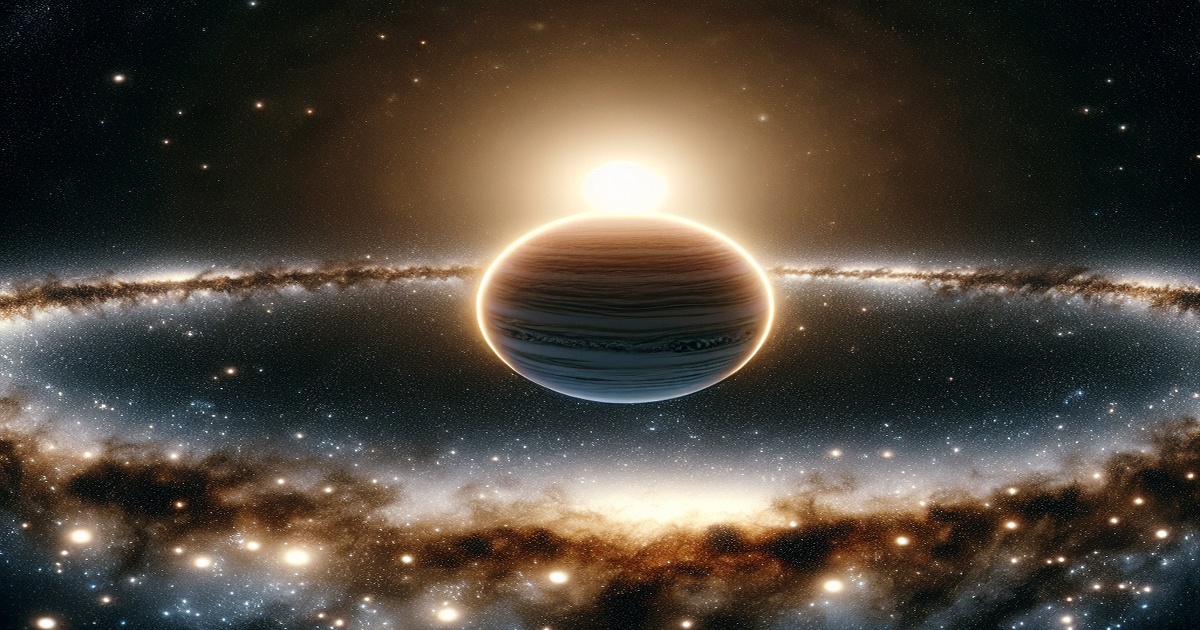Astronomers have made an exciting discovery of a unique planet, named AT2021uey b, situated on the outskirts of our galaxy. This Jupiter-sized gas giant is located about 3,200 light-years away from Earth and revolves around a cooler M dwarf star roughly every 4,170 days. One remarkable aspect of this planet is that it is only the third exoplanet ever identified so far from the galactic center, a feat that highlights the exceptional nature of this finding.
The discovery of AT2021uey b was made possible through a method called microlensing, which occurs when the light from a background star is amplified due to the gravitational influence of a planet. The research, announced on May 7 and published in the journal Astronomy & Astrophysics, involved expert analysis, patience, and a considerable amount of luck, as highlighted by Marius Maskoliunas, a co-author of the study from Vilnius University. He noted the complexities of waiting for the alignment of the source star and the lensing object, along with the need to sift through vast amounts of data, since most stars exhibit pulsations for various reasons, making the microlensing effect quite rare.
Traditionally, exoplanets have been discovered through common detection methods such as transit photometry and radial velocity, which rely on observing the dimming effects of stars as planets transit or cause gravitational perturbations. However, microlensing is a less frequently employed technique that stems from Einstein’s theory of general relativity. This method exploits the bending of light through curved space-time caused by massive objects, thereby magnifying the light from distant stars when influenced by a planet's gravity. Maskoliunas emphasized the fascinating aspect of microlensing, which allows for the identification of celestial bodies that are otherwise invisible, much like determining the species of a bird by its shadow.
The cosmic shadow of AT2021uey b was first recorded in 2021 using data from the European Space Agency's Gaia telescope, indicated by a brief increase in the brightness of its host star. Subsequent observations were conducted at Vilnius's Moletai Astronomical Observatory, leading researchers to calculate that this gas giant has a mass 1.3 times that of Jupiter. Its host star's temperature is around half that of our Sun, and the exoplanet is four times as distant from its star as the Earth is from the Sun. Researchers are intrigued by the fact that AT2021uey b is found in a region of the galaxy that is deficient in the heavier elements typically necessary for planet formation, suggesting that planets can exist in unexpected and varied environments. Edita Stonkute, the project’s leader, expressed her surprise at how close this Jupiter-like planet is to its star and mentioned the need to reconsider existing models of planetary formation as the data accumulates, revealing systems that differ significantly from our own solar system.







6 Comments
Fuerza
Another gas giant? We already know Jupiter exists. This discovery feels redundant.
Manolo Noriega
Can't wait to hear more about this research! The implications for science are huge!
Fuerza
This discovery could lead to new insights into planetary formation. Excited to see how it develops!
Ongania
This planet's location – so far from the galactic center – likely means it's not habitable anyway.
Fuerza
I love the idea of using microlensing to find new planets. It shows how creative science can be!
Bella Ciao
The complexities of this discovery highlight just how intricate and mysterious our universe is.